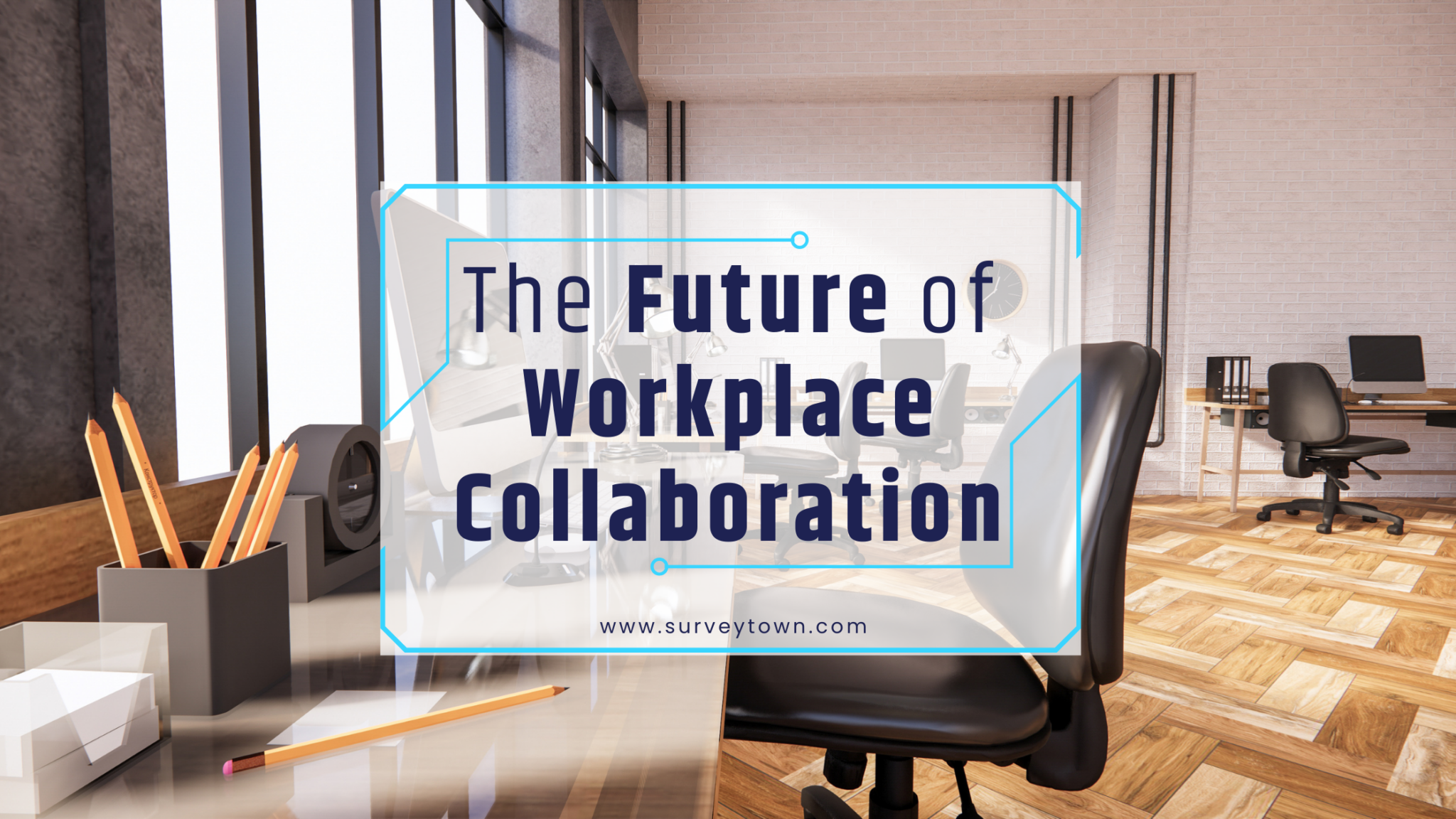Collaboration is a game-changer in today’s work landscape. It fuels innovation and drives productivity, transforming organizations. Gone are the days of individual efforts; collaboration creates an environment where ideas flourish and perspectives thrive. By harnessing collective intelligence, teams achieve more than individuals alone.
Click here for our awesome article about workplace collaborations!
What makes collaboration so exciting is its power to ignite creativity and problem-solving. When people come together with their unique knowledge and experiences, fresh ideas flow freely. This dynamic exchange sparks innovative solutions that may have otherwise been missed. Cultivating a culture of collaboration unlocks new approaches to challenges.
Effective collaboration also supercharges team productivity. Seamless cooperation leads to efficient task completion as everyone contributes their strengths towards shared goals. The sense of shared responsibility motivates team members to push harder for collective success. The benefits extend beyond individuals; organizations themselves reap rewards from fostering a collaborative culture.
To summarize:
- Collaboration fuels innovation by embracing diverse perspectives.
- Effective collaboration empowers problem-solving capabilities.
- Collaborative environments boost productivity through shared responsibilities.
- Organizations gain a competitive edge by fostering a collaborative culture.
By recognizing the immense value of collaboration in today’s workplace dynamics, both employees and organizations can leverage this powerful tool for growth and extraordinary achievements.
The Future of Collaboration in the Workplace
Welcome to the exciting world of workplace collaboration, where innovation and success go hand in hand. As an expert in this field, I am here to guide you through the latest trends and predictions that will shape how we collaborate at work. Get ready for a transformative journey!
1. Embracing Remote and Hybrid Work Models
In our ever-changing landscape, remote and hybrid work models are taking center stage. Thanks to advancements in technology, employees can now work from anywhere with an internet connection. This shift not only offers flexibility but also opens up opportunities for global talent acquisition. Discover how these models can boost employee satisfaction while reducing overhead costs.
2. Harnessing the Power of Digital Collaboration Tools
With teams scattered across different locations, digital collaboration tools have become indispensable for effective communication and project management. Platforms like Slack, Microsoft Teams, and Zoom provide real-time messaging, video conferencing, file sharing, and task tracking – all essential elements for seamless teamwork regardless of physical distance.
3. Breaking Down Silos with Cross-Functional Collaboration
Gone are the days when collaboration was confined within departmental boundaries! Today’s organizations thrive on cross-functional collaboration that brings together diverse perspectives from marketing, sales, product development, customer service – you name it! By breaking down silos between departments, innovation flourishes.
4. Unleashing Agility With Agile Methodologies
Agile methodologies have taken the business world by storm due to their ability to enhance collaboration among team members working on complex projects with changing requirements. Through daily stand-up meetings known as “scrums,” agile frameworks like Scrum promote regular communication where progress updates are shared collectively.
5. Stepping into a Virtual Reality (VR) & Augmented Reality (AR) Revolution
Prepare yourself for a mind-blowing experience as emerging technologies like VR and AR revolutionize remote collaboration! Imagine being able to interact with your colleagues in immersive virtual environments as if you were physically present. These technologies have the potential to transform industries such as architecture, engineering, and healthcare.
6. Prioritizing Employee Well-Being
In today’s fast-paced world, organizations are realizing that employee well-being is crucial for fostering a collaborative work environment. By prioritizing work-life balance, mental health support programs, and flexible schedules, companies create an atmosphere where employees feel valued and motivated to collaborate effectively.

As we navigate the future of work together, it is vital for organizations to stay ahead of these trends in order to thrive. Embrace remote work models, leverage digital collaboration tools, promote cross-functional collaboration, embrace agile methodologies, and explore VR/AR applications – all while prioritizing employee well-being. These key considerations will help you build a collaborative culture within your organization.
In the next section, we will delve into the challenges that organizations may face when implementing effective collaboration strategies and how leadership plays a vital role in overcoming them. Stay tuned!
Challenges in Implementing Effective Collaboration
As a collaboration expert, I know the struggles of implementing effective teamwork in the workplace. But don’t worry! I’m here to help you overcome these obstacles and create a more collaborative work environment. Let’s explore some common challenges and how to conquer them:
Communication Barriers
Communication is crucial for successful collaboration, but it can be a major hurdle. Misunderstandings, language barriers, and lack of clarity can hinder teamwork. To foster collaboration, organizations must prioritize clear communication through regular team meetings, project management tools, and creating an environment where employees feel comfortable expressing their ideas.
Building Trust
Trust is the foundation of successful collaboration. Without trust, individuals hesitate to share thoughts or take risks for innovation. Organizations should focus on creating a culture that promotes transparency, accountability, and mutual respect to foster trust among team members.
Embracing Change
Introducing new collaboration practices or tools may face resistance from employees accustomed to traditional ways of working. Overcoming this requires effective change management strategies like providing training sessions, highlighting the benefits of collaboration, and involving employees in decision-making processes.
Leadership Excellence
Leaders play a vital role in fostering a collaborative culture within an organization; however, they may struggle with relinquishing control or adapting their leadership style for teamwork among employees. To address this challenge effectively, leaders must lead by example while empowering their teams.

Predictions for the Future of Collaboration in the Workplace
As an expert in workplace collaboration, I have firsthand experience and deep knowledge of the subject. Let me share with you some exciting trends and predictions that are shaping the future of collaboration.
1. Embracing Emerging Technologies
The integration of cutting-edge technologies like artificial intelligence (AI) and virtual reality (VR) is set to revolutionize how we collaborate at work. AI-powered tools automate repetitive tasks, freeing up valuable time for employees to focus on strategic and creative work. VR technology enables remote teams to collaborate seamlessly as if they were physically present, enhancing communication and fostering a strong sense of connection.
2. Acquire Essential Collaboration Skills
In our increasingly interconnected and globalized world, collaboration skills will be highly sought after by employers. Effective communication, cooperation with others, and working towards common goals will be essential for success in the future workforce. Organizations that prioritize developing collaborative skills will gain a competitive advantage when it comes to attracting top talent.
3. Introduce Flexible Work Models
Traditional office-based structures are rapidly evolving due to technological advancements and changing employee preferences. Remote or hybrid work models are becoming more common as organizations embrace flexibility. This shift allows teams from different locations or time zones to collaborate seamlessly while accommodating individual needs.
By staying ahead of these trends and embracing innovative approaches, organizations can create a collaborative culture that fosters creativity, productivity, and overall success in today’s ever-changing workplace landscape.
Next Steps Towards Enhanced Collaboration
Now that you understand the importance of collaboration and its future trends, it’s time to take action. Here are some tips for improving collaboration in your workplace:
- Foster a Collaborative Culture: Encourage open communication, trust-building activities, and cross-functional collaborations. Create an environment where everyone feels comfortable sharing ideas and working together.
- Embrace Remote Work: Use digital tools for seamless virtual collaboration. Invest in video conferencing software, project management platforms, and instant messaging apps to bridge geographical gaps.
- Establish Clear Goals: Define objectives, roles, responsibilities, and deadlines from the start of any collaborative effort. This ensures everyone is on the same page while providing a roadmap for success.
- Schedule Regular Check-Ins: Keep all team members informed about project progress through regular updates. This helps identify roadblocks early on and fosters accountability.
- Celebrate Successes: Recognize individual contributions and collective achievements along the way to boost morale within teams.
By implementing these strategies, you can create an environment conducive to effective collaboration where employees feel empowered to share their ideas openly—resulting in increased innovation and driving organizational success.
Remember to embrace teamwork, open communication, and continuous improvement—a mindset that creates a collaborative workplace culture driving success today.




